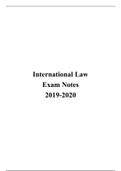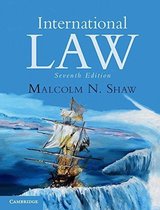Samenvatting
Summary International law exam notes
- Instelling
- Rijksuniversiteit Groningen (RuG)
- Boek
- International Law
These notes cover the lectures and the reading materials that are specifically relevant for the exam along with the case law and the legislation from EIL. My first set of notes, International Law Summaries, which are also available on Stuvia, are very detailed and give a very in-depth understanding...
[Meer zien]





